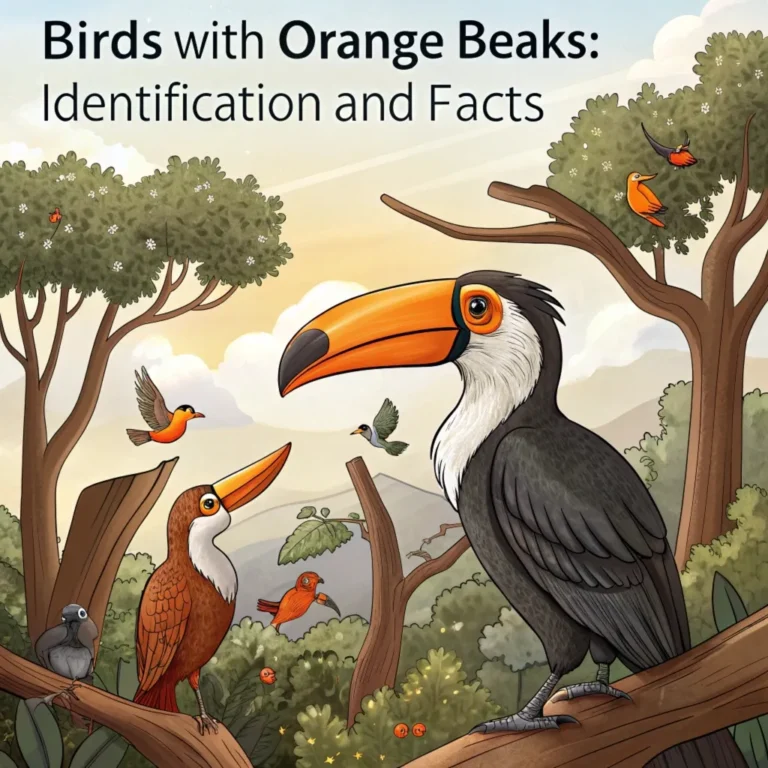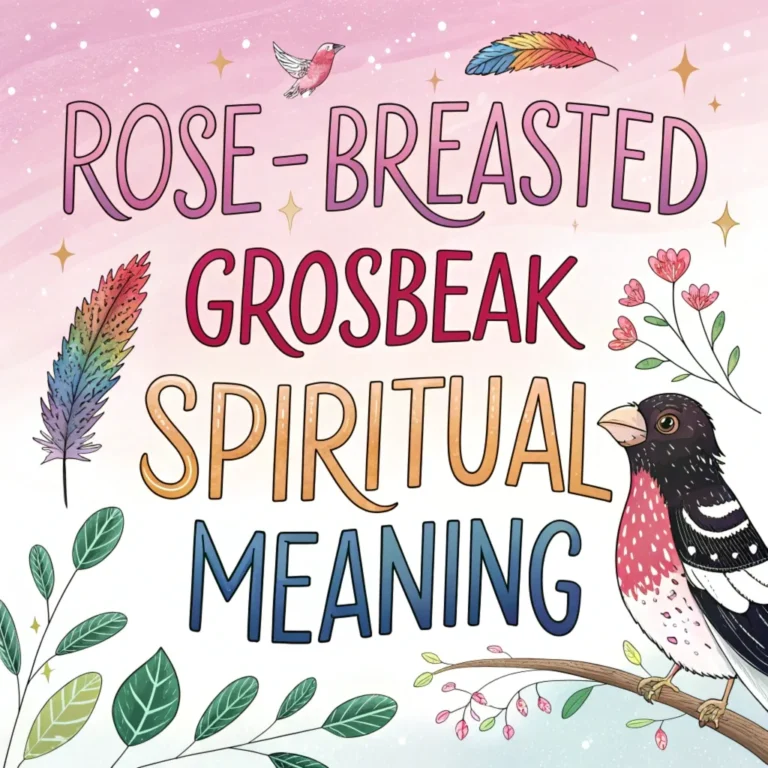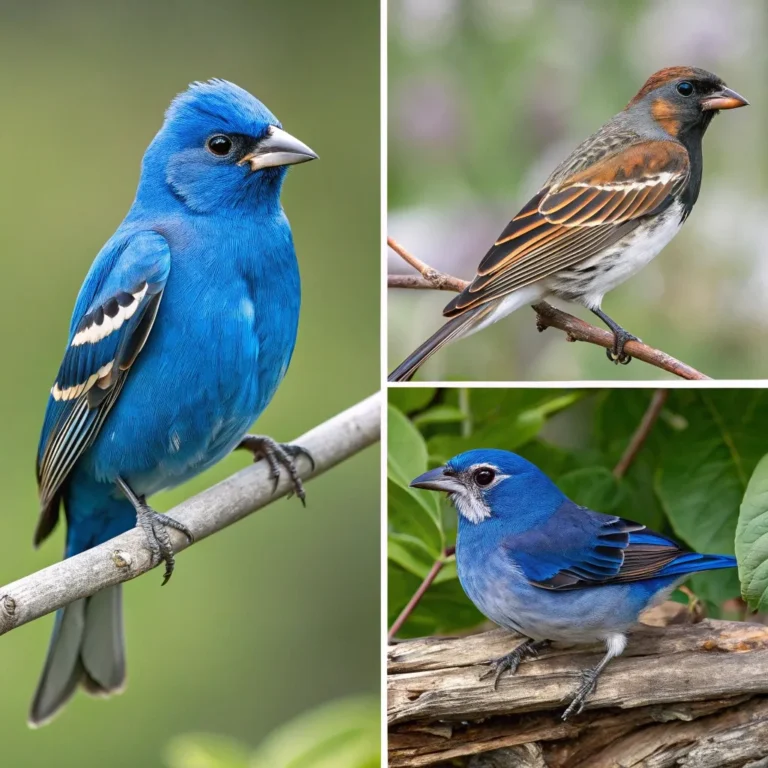12 Birds That Lay Blue Eggs: Nature’s Colorful Marvels
The world of birds is full of wonders, and one of the most captivating aspects is the variety of egg colors found in different species.
While many birds lay white or brown eggs, some produce stunning blue eggs that never fail to fascinate bird enthusiasts and nature lovers alike.
Let’s explore 12 remarkable birds known for their blue eggs and the unique characteristics that make them stand out.

Key Takeaways
- Blue eggs serve multiple purposes: The blue coloration provides camouflage and helps regulate temperature for developing embryos.
- Pigment production: The blue color in eggs is primarily due to the pigment biliverdin, deposited during shell formation.
- Diverse species: Birds that lay blue eggs range from common backyard visitors to exotic tropical species.
- Varying shades: Blue egg colors can range from pale sky blue to vibrant turquoise, sometimes with speckles or spots.
- Nesting habits: Birds that lay blue eggs have diverse nesting preferences, from tree cavities to ground nests.
- Incubation periods: The time it takes for blue eggs to hatch varies significantly between species.
- Conservation implications: Observing blue eggs can provide insights into bird population health and breeding success.
The fascinating world of blue bird eggs offers a unique glimpse into the intricate relationship between birds and their environment.
These colorful eggs not only serve practical purposes but also provide valuable information to researchers studying avian biology and ecology.
By observing the patterns and variations in blue egg production, scientists can gain insights into bird behavior, population dynamics, and the impacts of environmental changes on different species.
1. American Robin
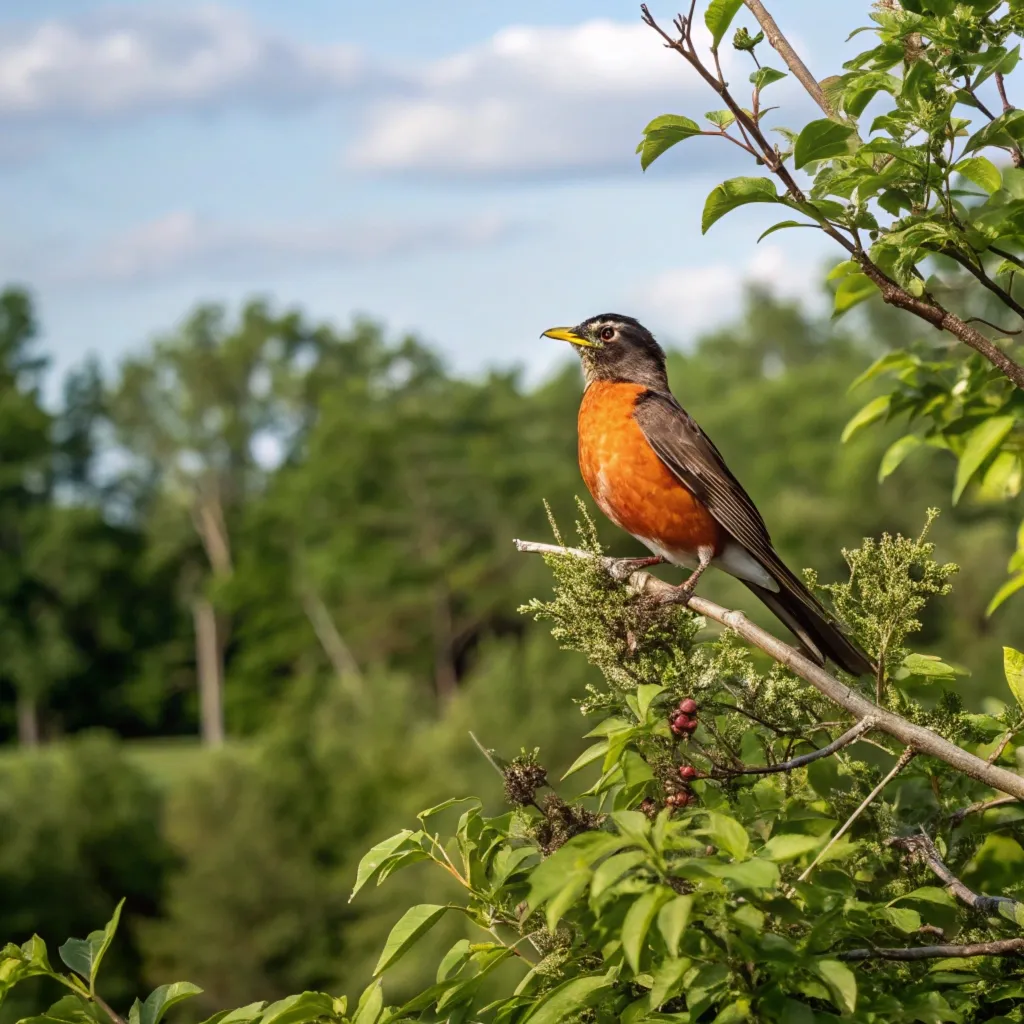
The American Robin is perhaps the most well-known bird associated with blue eggs. These common backyard birds lay 3 to 5 eggs per clutch, each a beautiful sky blue color.
Robin eggs are approximately 1.2 inches long and 0.8 inches wide. The vibrant blue of robin eggs has become so iconic that the color is often referred to as “robin’s egg blue.”
American Robins are not only known for their distinctive blue eggs but also for their role as harbingers of spring in many parts of North America. These adaptable birds are often seen hopping across lawns, searching for worms and insects.
Their cheerful song and bright orange breast make them easily recognizable and beloved by many. Robins typically build their nests in trees or on man-made structures, using grass, twigs, and mud to create a sturdy cup-shaped home for their eggs.
The nesting habits of American Robins provide an excellent opportunity for bird enthusiasts to observe the entire breeding cycle, from nest-building to egg-laying and finally to the hatching of chicks.
This accessibility has made robins a popular subject for both casual observers and scientific studies on avian reproduction and behavior.
2. Eastern Bluebird

Eastern Bluebirds are cavity nesters that produce pale blue to white eggs. They typically lay 4 to 5 eggs per clutch.
Bluebird eggs are smaller than robin eggs, measuring about 0.8 inches in length. Interestingly, while most bluebird eggs are blue, about 4-5% of the time, they may lay white eggs.
The Eastern Bluebird has become a symbol of conservation success in North America. These beautiful birds faced declining populations in the mid-20th century due to habitat loss and competition from introduced species.
However, thanks to dedicated conservation efforts, including the widespread installation of bluebird nest boxes, their numbers have rebounded significantly.
This recovery demonstrates the positive impact that human intervention can have on bird populations when guided by scientific understanding and community engagement.
Bluebird enthusiasts often participate in nest box monitoring programs, which provide valuable data on bluebird breeding success and population trends.
These citizen science efforts not only contribute to scientific knowledge but also foster a deeper connection between people and the natural world, highlighting the importance of biodiversity conservation in our everyday lives.
3. Blue Jay

The Blue Jay, known for its striking blue plumage, lays eggs that match its beautiful feathers. Blue Jays typically lay 2 to 7 eggs per clutch.
Their eggs are light blue to olive in color and often feature brown spots. Blue Jay eggs measure approximately 1.2 inches long and 0.8 inches wide.
Blue Jays are known for their intelligence and complex social behaviors. These birds are members of the corvid family, which includes crows and ravens, and they display remarkable problem-solving abilities.
Blue Jays play an important role in forest ecosystems as seed dispersers, particularly for oak trees. Their habit of caching acorns contributes to forest regeneration and helps maintain biodiversity in woodland habitats.
The nesting behavior of Blue Jays offers insights into their adaptability and parental care.
Both male and female jays participate in nest building and egg incubation, demonstrating a high level of cooperation in raising their young.
This shared responsibility contributes to the success of their offspring and highlights the complex family dynamics present in avian species.
4. House Finch
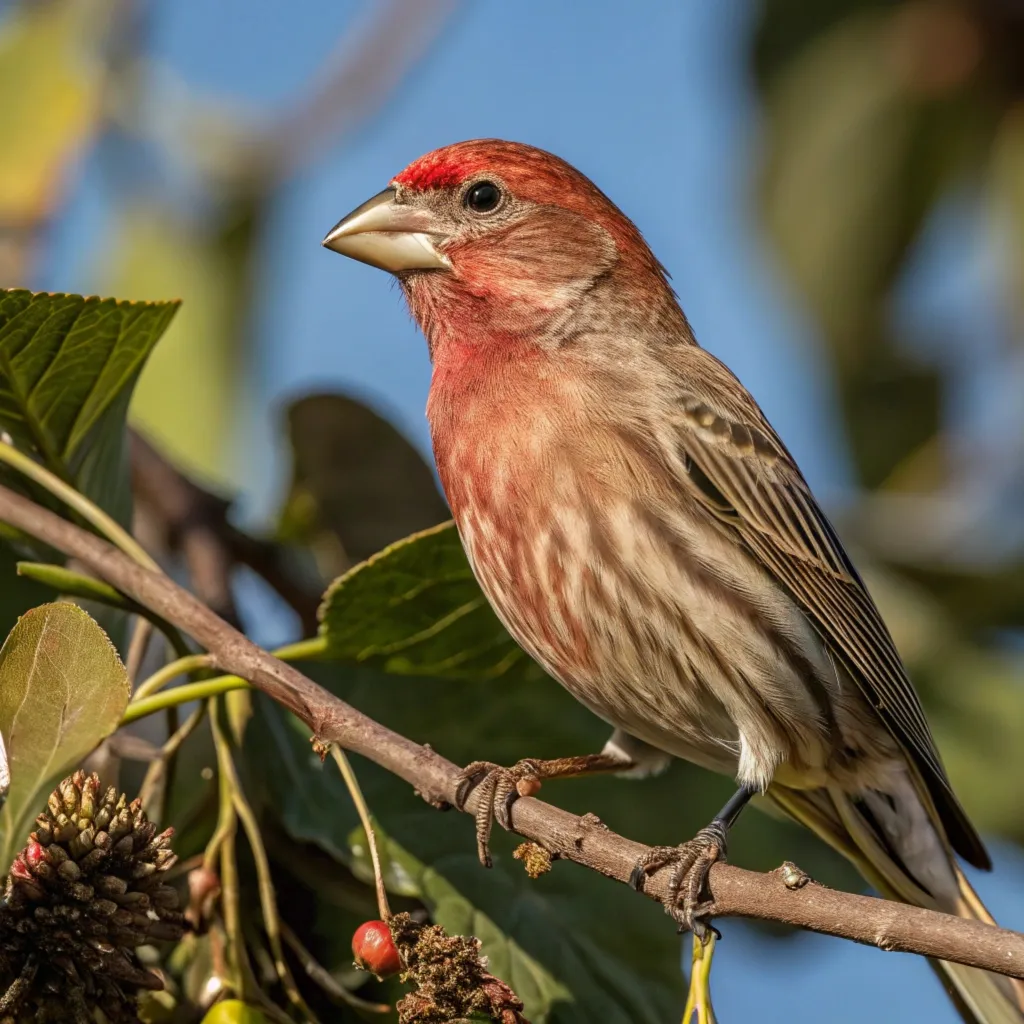
House Finches are small, adaptable birds that often nest near human habitations. They lay 3 to 6 eggs per clutch.
House Finch eggs are pale bluish-green in color, often with black or lavender spots. These eggs are relatively small, measuring about 0.8 inches in length.
The House Finch has an interesting history in North America. Originally native to the western United States, these birds were introduced to the eastern part of the continent in the 1940s when pet shop owners in New York released captive birds to avoid prosecution for selling them illegally.
Since then, House Finches have spread rapidly across the eastern states, demonstrating their remarkable adaptability to various environments, including urban and suburban areas.
House Finches are known for their melodious songs and the male’s vibrant red coloration, which is derived from carotenoid pigments in their diet.
Their ability to thrive in human-altered landscapes makes them excellent subjects for studying bird-human interactions and the impacts of urbanization on avian populations.
The pale blue-green eggs of House Finches add a touch of natural beauty to many backyard nesting sites, allowing homeowners to witness the wonders of avian reproduction up close.
5. European Starling
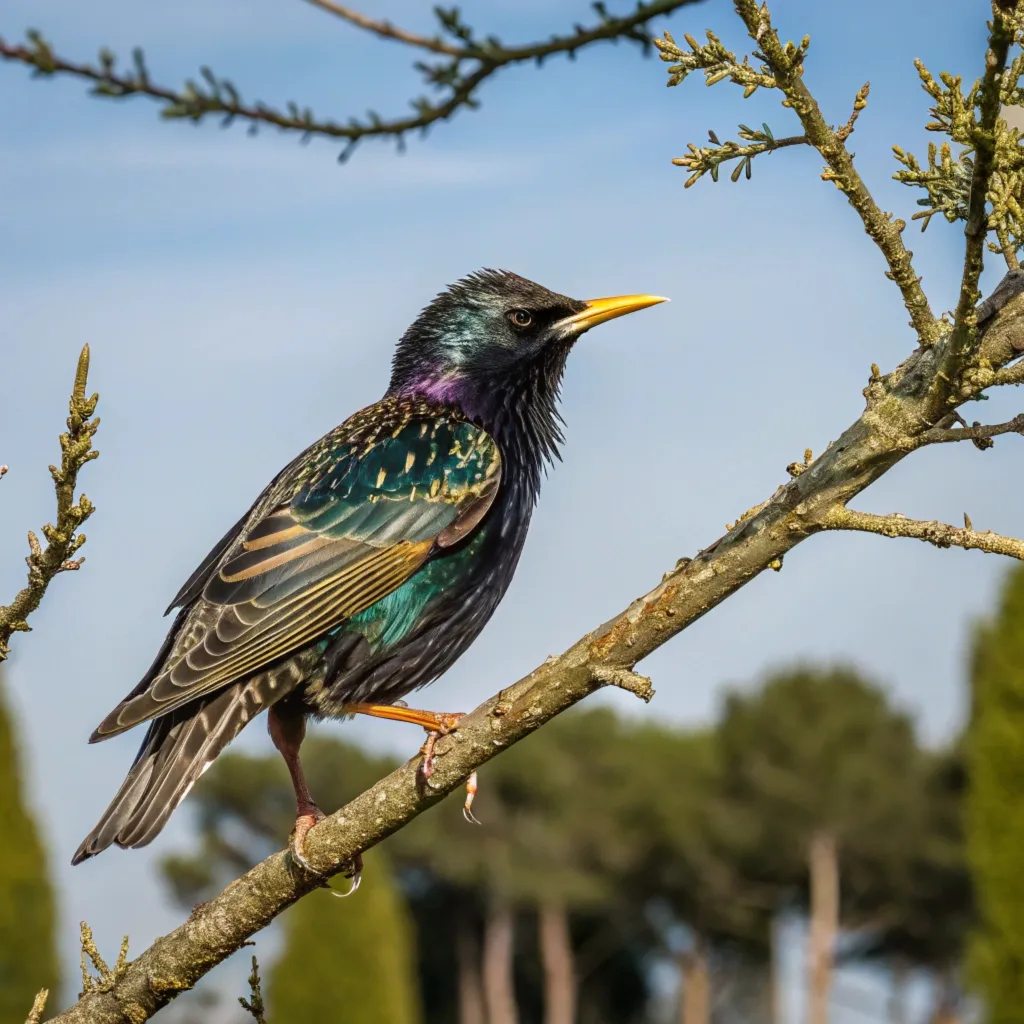
The European Starling, an introduced species in North America, lays 4 to 6 eggs per clutch. Their eggs are pale blue and may have small dark markings.
Starling eggs are slightly larger than those of house finches, measuring about 1.2 inches in length.
The European Starling has a controversial history in North America.
Introduced in the late 19th century as part of an effort to bring all birds mentioned in Shakespeare’s works to the New World, starlings have since become one of the most abundant bird species on the continent.
Their success has led to competition with native cavity-nesting birds, often displacing species like bluebirds and woodpeckers from their nesting sites.
Despite their negative impact on some native species, starlings have also become a subject of scientific interest.
Their ability to form large, coordinated flocks, known as murmurations, has inspired research into collective behavior and self-organization in animal groups.
The pale blue eggs of starlings, often found in urban and suburban areas, serve as a reminder of the complex relationships between introduced species, native wildlife, and human-altered environments.
6. Blue-footed Booby
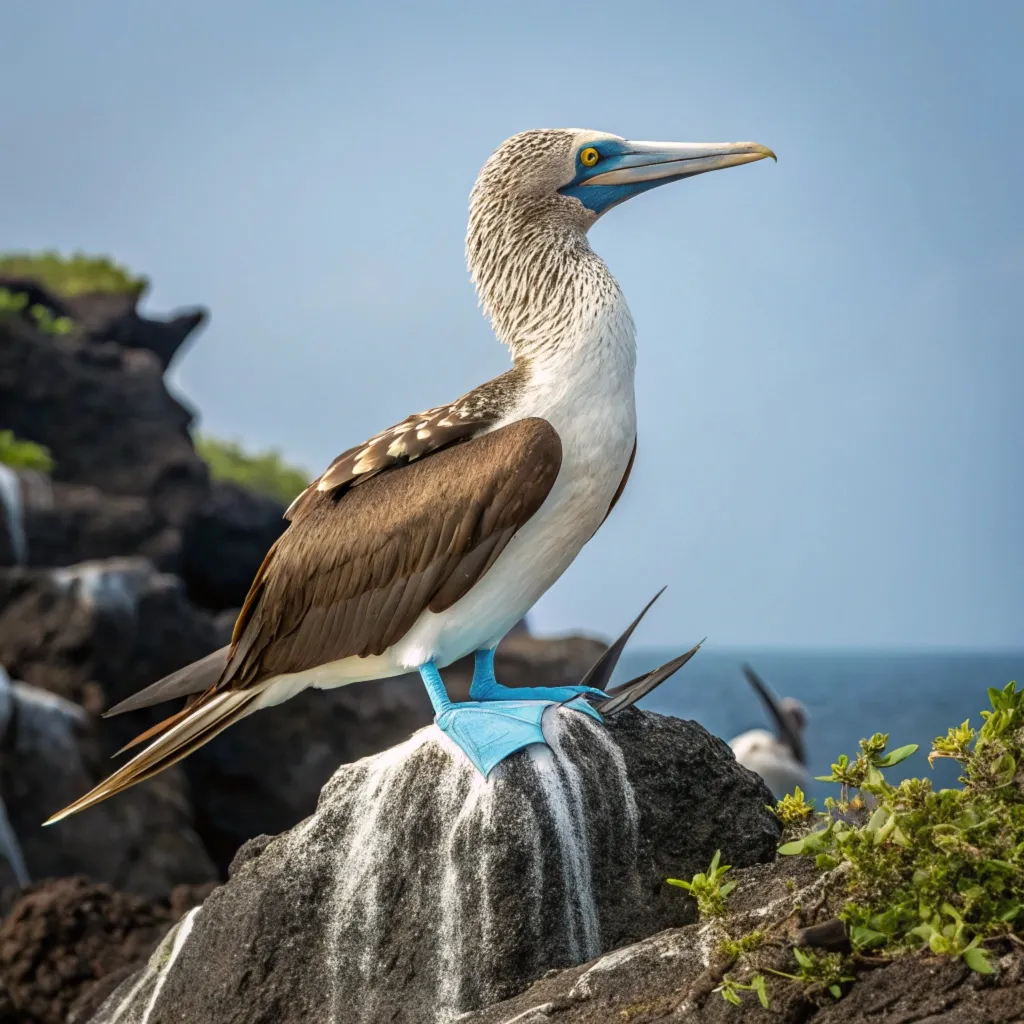
The Blue-footed Booby, famous for its bright blue feet, lays 2 to 3 eggs per clutch. Their eggs are pale blue and take an impressive 45 days to hatch. These seabirds are found along the western coasts of Central and South America.
The Blue-footed Booby is not only known for its distinctive blue feet but also for its unique courtship displays. Males perform an elaborate dance, lifting their blue feet high and showing them off to potential mates.
The intensity of the blue color in their feet is an indicator of the bird’s health and nutritional status, playing a crucial role in mate selection.
This connection between diet, physical appearance, and reproductive success provides valuable insights into the evolution of sexual selection in birds.
Blue-footed Boobies are excellent divers, plunging into the ocean from great heights to catch fish. Their specialized hunting technique and their dependence on marine ecosystems make them important indicators of ocean health.
The pale blue eggs of these seabirds, often laid on bare ground or in simple nests, face numerous challenges from predators and environmental factors, highlighting the resilience and adaptations required for survival in coastal habitats.
7. Gray Catbird
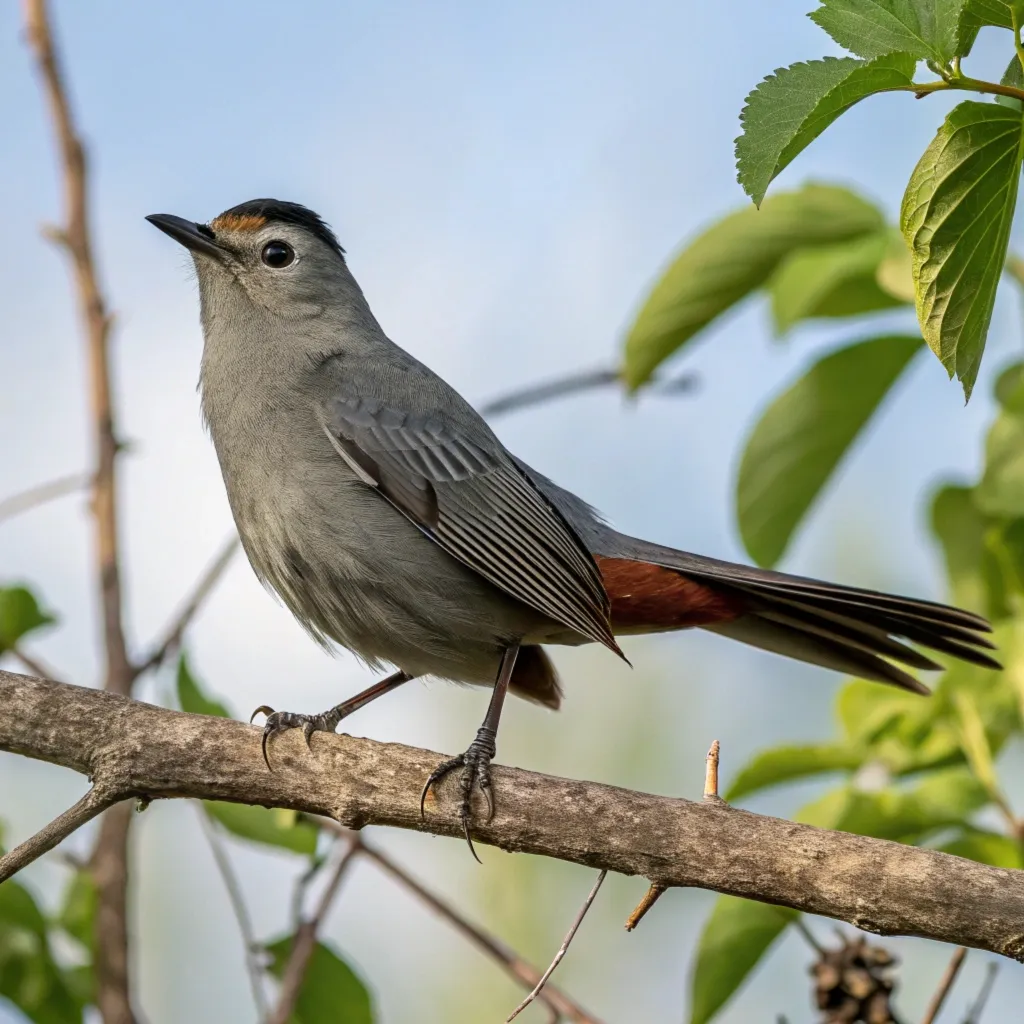
Gray Catbirds lay 2 to 6 eggs per clutch. Their eggs are a beautiful turquoise green color with red speckles.
Catbird eggs measure about 1 inch in length and 0.6 inches in width. These birds can raise up to three broods in a single nesting season.
The Gray Catbird is known for its distinctive cat-like mewing call, which gives the species its common name.
These birds are members of the mimid family, which includes mockingbirds and thrashers, and are capable of mimicking a wide variety of sounds, including those of other bird species and even mechanical noises.
This vocal versatility makes catbirds fascinating subjects for studies on avian communication and learning.
Catbirds are important contributors to ecosystem health, as they consume large quantities of insects and help control pest populations.
Their turquoise green eggs with red speckles are among the most visually striking of all North American bird eggs, adding a splash of color to the dense shrubs and thickets where these birds typically nest.
The catbird’s ability to raise multiple broods in a single season demonstrates their reproductive adaptability and highlights the importance of maintaining suitable habitats for these and other migratory songbirds.
8. Snowy Egret
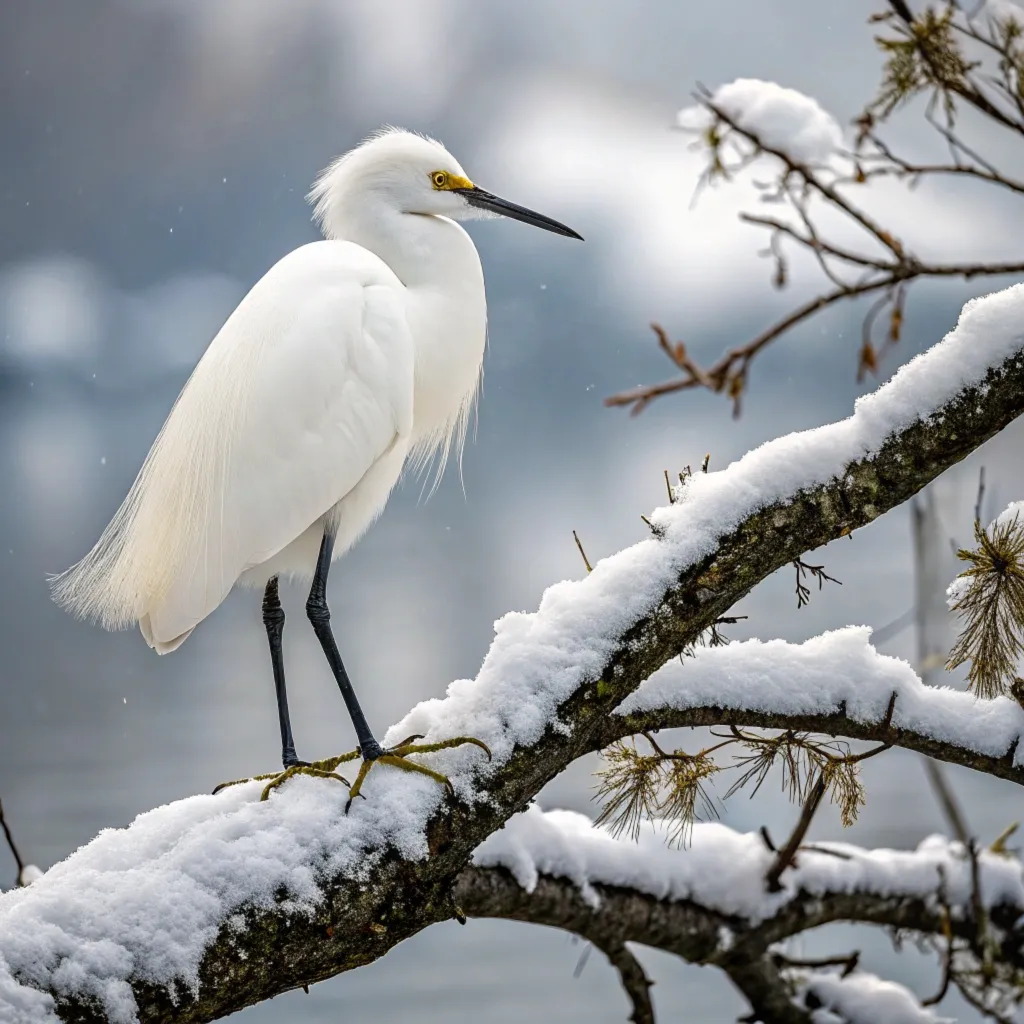
The elegant Snowy Egret lays 2 to 6 eggs per clutch. Their eggs are greenish-blue and measure 1.6 to 1.7 inches long and 0.9 to 1.3 inches wide. Snowy Egrets spend 24 to 25 days incubating their eggs before they hatch.
The Snowy Egret is renowned for its graceful appearance and distinctive breeding plumage. During the breeding season, adults develop long, wispy feathers called aigrettes, which were once highly prized in the fashion industry.
The demand for these feathers in the late 19th and early 20th centuries led to severe population declines, bringing the species close to extinction.
However, thanks to conservation efforts and legal protections, Snowy Egret populations have since recovered, making them a symbol of successful wildlife conservation.
These wading birds play a crucial role in wetland ecosystems, feeding on small fish, crustaceans, and insects.
Their presence in an area is often indicative of healthy aquatic habitats. The greenish-blue eggs of Snowy Egrets are typically laid in platform nests built in trees or shrubs near water.
Observing these nests and eggs provides valuable information about wetland health and the impacts of environmental changes on coastal and riparian ecosystems.
9. Red-winged Blackbird
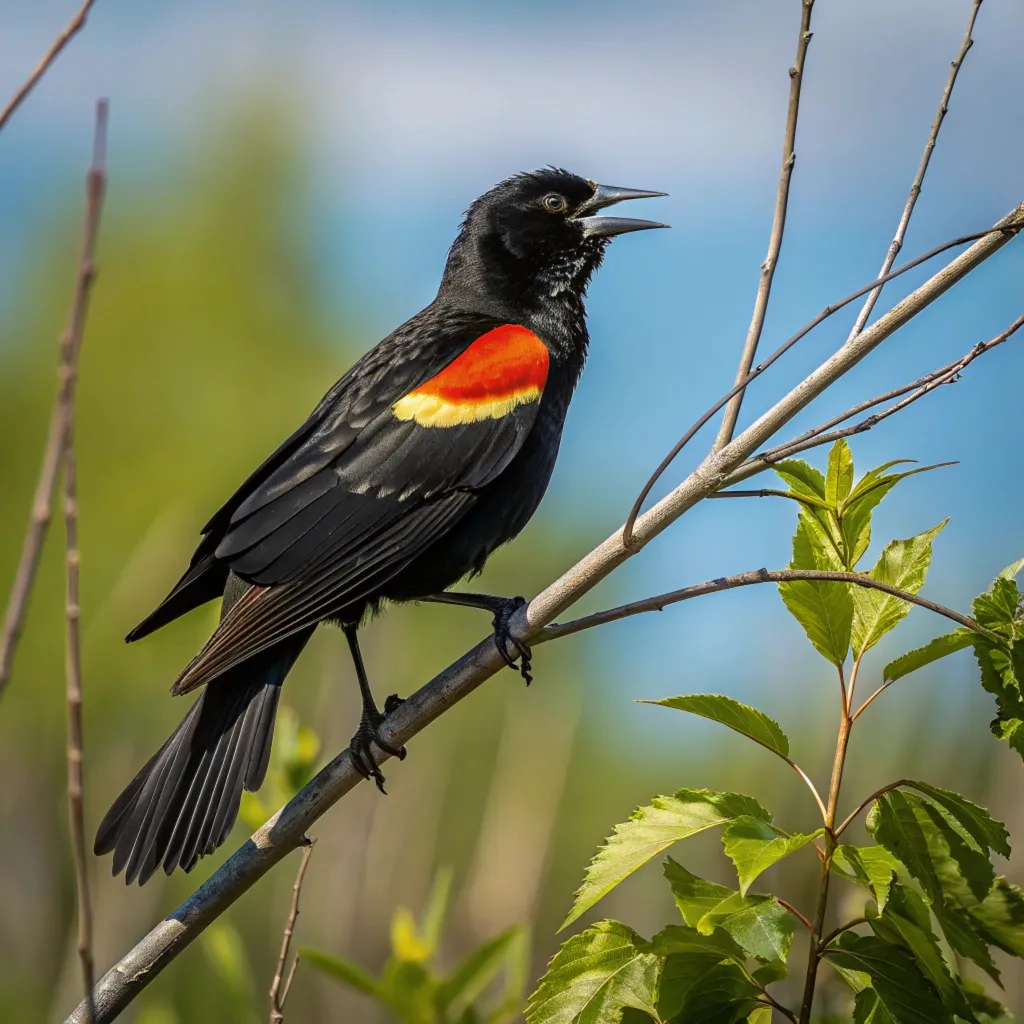
Red-winged Blackbirds produce eggs that are light blue-green with black or brown spots. They typically lay 3 to 4 eggs per clutch. These birds are known for their distinctive red and yellow shoulder patches.
The Red-winged Blackbird is one of the most abundant and widely recognized birds in North America.
Males are easily identified by their glossy black plumage and bright red shoulder patches, while females have a more subdued brown, streaked appearance.
This sexual dimorphism makes Red-winged Blackbirds excellent subjects for studies on mate selection and breeding behavior in birds.
These birds are often found in marshy areas and near water, where they build their nests in reeds or low vegetation. Red-winged Blackbirds are known for their aggressive defense of their territories, often mobbing much larger birds that venture too close to their nests.
This behavior, combined with their tendency to nest in loose colonies, creates a dynamic and complex social structure that has fascinated ornithologists for generations.
The light blue-green eggs with dark spots blend well with their surroundings, providing camouflage against potential predators.
10. Dunnock
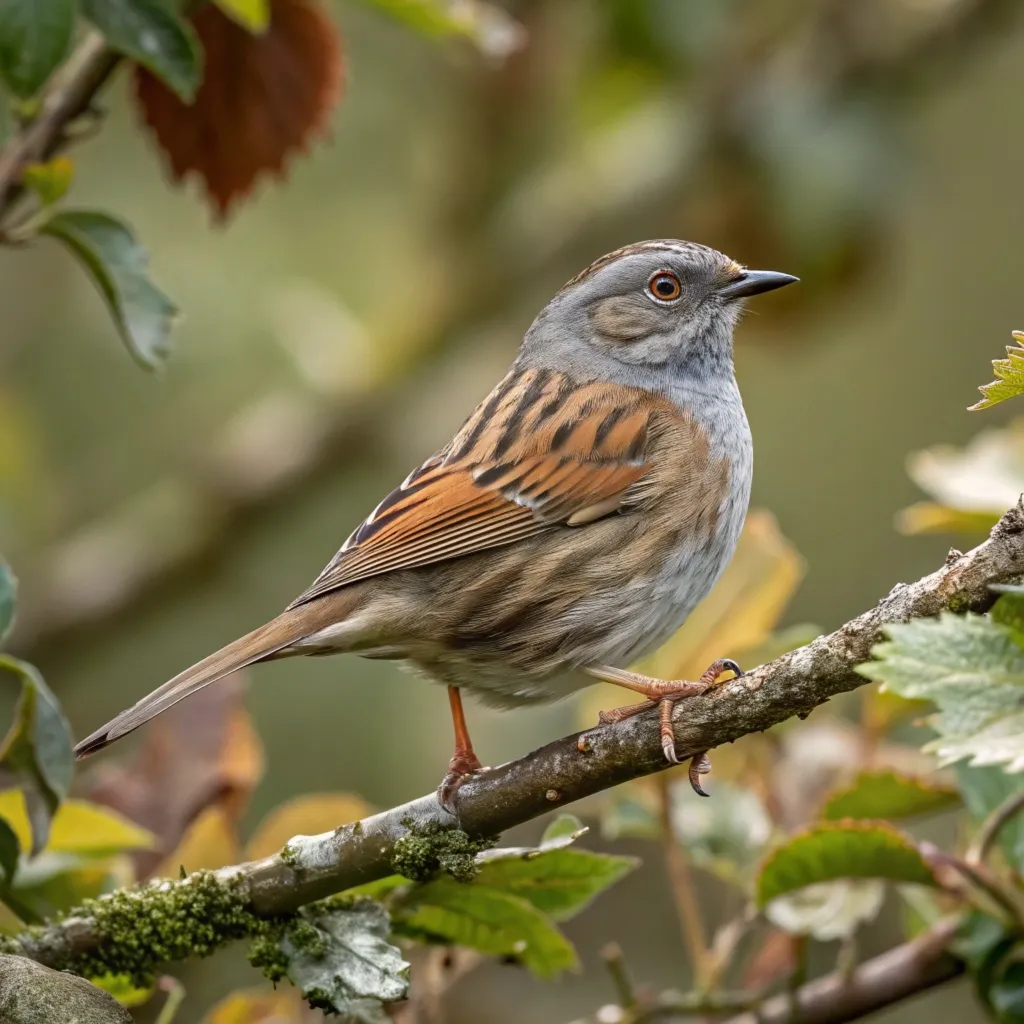
The Dunnock, also known as the hedge sparrow, lays 3 to 5 eggs per clutch. Their eggs are a glossy blue color, making them stand out among other small bird species. Dunnocks are common in Europe and parts of Asia.
The Dunnock is a small, unassuming bird that has surprised scientists with its complex breeding behavior. Despite their modest appearance,
Dunnocks engage in a variety of mating strategies, including monogamy, polygyny, polyandry, and polygynandry.
This flexibility in mating systems has made the Dunnock a model species for studying the evolution of avian reproductive strategies and the factors that influence them.
These birds are often found in gardens, hedgerows, and woodland edges, where they forage for insects and seeds.
Their ability to thrive in human-altered landscapes has made them an important indicator species for monitoring the health of urban and suburban ecosystems.
The glossy blue eggs of Dunnocks, often hidden in dense vegetation, represent a beautiful example of the diversity of egg coloration in the avian world and serve as a reminder of the hidden wonders that can be found in even the most common garden birds.
11. Common Myna

The Common Myna, native to Asia, lays 4 to 5 eggs per clutch. Their eggs are turquoise or blue-green in color. These adaptable birds are known for their ability to mimic human speech and other sounds.
The Common Myna is a highly intelligent and adaptable bird species that has successfully established populations in many parts of the world outside its native range.
Known for their vocal abilities and problem-solving skills, mynas have become popular as pets in some regions.
However, their success as an invasive species has also led to concerns about their impact on native bird populations in areas where they have been introduced.
In their native habitats, Common Mynas play important roles as seed dispersers and insect controllers.
Their turquoise or blue-green eggs are typically laid in tree cavities or artificial structures, demonstrating the species’ ability to adapt to various nesting environments.
The breeding behavior of mynas, including their egg-laying patterns, provides valuable insights into the reproductive strategies of successful colonizing species and the challenges of managing introduced populations in new ecosystems.
12. Blackbird
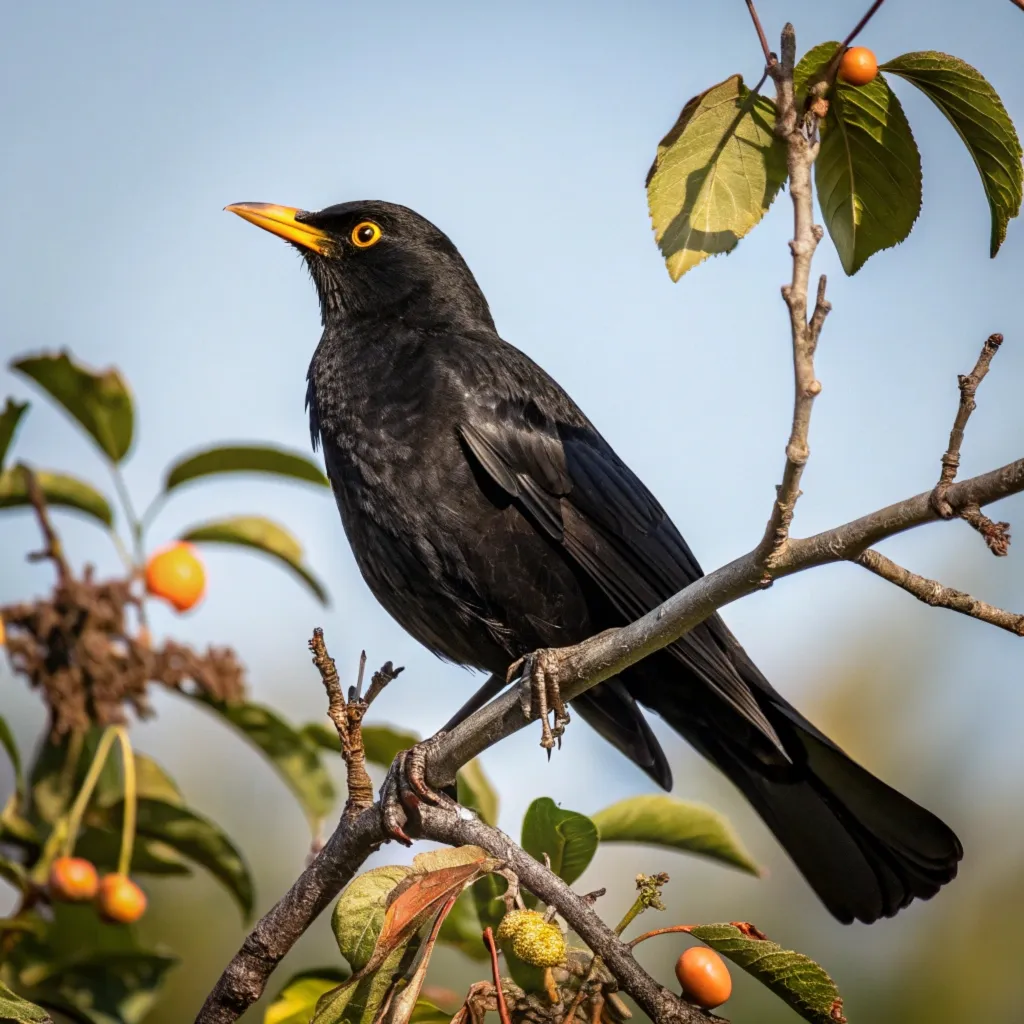
The Common Blackbird, found in Europe, Asia, and North Africa, lays 3 to 5 eggs per clutch. Their eggs are blue-green with brown speckles. Blackbird eggs measure about 1.1 inches in length and 0.8 inches in width.
The Common Blackbird is a species of thrush that has adapted well to urban environments, becoming a familiar sight in gardens and parks across its range. Males are known for their melodious song, which is often one of the first bird calls heard at dawn.
This species has been the subject of numerous studies on urban ecology and the effects of light pollution on bird behavior, as city-dwelling blackbirds have been observed singing at night under artificial lighting.
Blackbirds exhibit interesting nesting behaviors, often building their nests in shrubs, hedges, or small trees. The blue-green eggs with brown speckles are well-camouflaged against predators.
Climate change has been observed to affect the timing of blackbird breeding, with earlier egg-laying dates recorded in recent years. This shift in breeding phenology makes blackbirds an important indicator species for monitoring the impacts
FAQs About Birds with Blue Eggs
Why do some birds lay blue eggs while others don’t?
The ability to lay blue eggs is determined by genetics. Birds that lay blue eggs have genes that allow them to produce and deposit the pigment biliverdin in their eggshells.
Are blue eggs more nutritious than other colored eggs?
No, the color of the eggshell does not affect the nutritional content of the egg itself. The egg’s nutrition comes from the yolk and white inside, not the shell.
Can the shade of blue in eggs vary within the same species?
Yes, there can be variations in the shade and intensity of blue within the same species. Factors such as diet, age of the bird, and environmental conditions can influence egg color.
Do all birds in a species that lays blue eggs always lay blue eggs?
While it’s typical for a species known for blue eggs to consistently lay blue eggs, there can be rare exceptions. For example, Eastern Bluebirds occasionally lay white eggs.
How can I identify bird eggs I find in nature?
It’s best to observe bird eggs from a distance to avoid disturbing the nest. Use field guides or consult with local bird experts to help identify eggs based on color, size, and location.

Joyce is the passionate founder of Chirping Hearts, a website dedicated to sharing her love for birds and providing valuable information about avian life. With a background in ornithology and years of experience in birdwatching, Joyce aims to inspire others to appreciate the beauty and diversity of birds. Through her engaging articles and guides, she hopes to foster a community of bird enthusiasts who share her enthusiasm for these incredible creatures. When she’s not writing, Joyce enjoys exploring nature trails and observing birds in their natural habitats.



